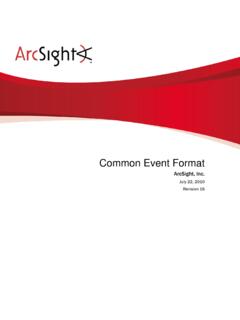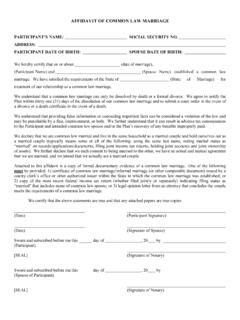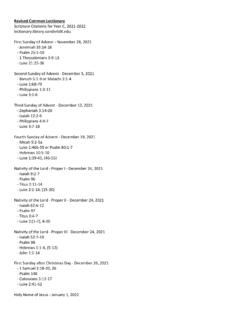Transcription of Syllabus for Undergraduate Common Entrance Examination ...
1 - Syllabus Undergraduate Common Entrance Examination 2020 Government of Nepal Medical Education Commission Sanothimi, Bhaktapur Syllabus for Undergraduate Common Entrance Examination (2020) Medical Education Commission 1 Table of Contents Introduction: ..2 Objectives: .. 2 Process: .. 2 General consensus: .. 3 Syllabus : 1. MBBS/BDS/BSc Nursing/BASLP/ B Perfusion Technology .. 4 2. BAMS/BSc MLT/BSc MIT/ BPT/ BPharm/B Optometry .. 6 3. BPH (Bachelor in Public Health) .. 8 4. BNS (Bachelor in Nursing Science) .. 11 Sample questions for all programs .. 12 Syllabus for Undergraduate Common Entrance Examination (2020) Medical Education Commission 2 Medical Education Commission Syllabus for Undergraduate Entrance Examination (2020) Introduction: Health Professional education was started in Nepal formerly after establishment of Institute of Medicine under Tribhuvan University in 1972 beginning with training of middle level human resources for health.
2 Bachelor level courses in Institute of Medicine was started in 1978 and postgraduate studies since 1982. Similarly, BP Koirala Institute of Health Sciences was established in eastern Nepal in 1993, Manipal Academy of Health Sciences was established under Kathmandu University as a Kathmandu University affiliated private institutions in 1993. Kathmandu University School of Medical Sciences as constituent campus started MBBS program in 2001. Then National Academy of Medical Sciences was established in 2002 and Patan Academy of Health Sciences in 2008. Since late 90's, over a period of decade, numerous private medical institutions were also opened in affiliation to various universities. In one hand, the rapid development of medical institutions helped for fulfilling the gap between need of human resources for health. In the other hand, there have been issues related to quality in health professional education and also the process and costs related to the Entrance Examination and student enrollment.
3 In this context, National Medical Education Act 2075 has envisioned the Common Entrance Examination to be conducted by Medical Education Commission for enrollment of students in various programs and colleges throughout the country. For conducting the Undergraduate Common Entrance Examination , the commission has felt the need to prepare a Common Syllabus in consultation with experts from various institutions with experience in Undergraduate Entrance Examination . Objectives: 1. To develop Common Syllabus of specific academic programs for Undergraduate Common Entrance Examination 2. To generate consensus and match logically between the existing Undergraduate Entrance Syllabus effective at various medical institutions 3. To find the scope of improvements/innovations in currently existing Undergraduate Entrance Examination Process: 1. Institutions conducting Undergraduate Entrance examinations were officially corresponded to send the ongoing Undergraduate programs they are conducting and the Syllabus for Entrance examinations.
4 2. The Syllabus for related disciplines from various institutions were compiled. 3. Team of experts in the related disciplines representing various institutions worked up for the Common Syllabus with the help of available compiled documents. 4. Workshop was conducted to scrutinize the contents and other aspects on Entrance Syllabus involving the experts who developed the Syllabus and experienced experts conducting Undergraduate Entrance examinations in various institutions and head/chief of Examination divisions in the respective institutions. 5. Workshop involving all head of institutions and concerned regulatory authority was conducted to come up with the consensus. Syllabus for Undergraduate Common Entrance Examination (2020) Medical Education Commission 3 General consensus: A Common consensus on relevant issues related to Syllabus were generated with brainstorming and regular discussions as per above mentioned process involving all stakeholders related to training of Undergraduate academic programs.
5 Experts agreed to develop the Syllabus for four groups representing all the Undergraduate programs: 1. MBBS/BDS/BSc Nursing/BASLP/ B Perfusion Technology 2. BAMS/BSc MLT/BSc MIT/BPT/BPharm/B Optometry 3. BPH (Bachelor in Public Health) 4. BNS (Bachelor in Nursing Science) A consensus was generated to have Entrance test paper with 200 multiple choice questions to improve content coverage as well as to match with the recent practice. This will also help differentiation of the candidates by minimizing the tie in the marks among the candidates. Multiple choice questions (MCQs) will be of Single Best Response Type (Type A) with four options. Adopt Criterion Referenced Test with 50% pass mark with no negative marking. A consensus was generated to allow 3 hours with instruction to paper setter that the stem or vignette of the MCQs should not exceed 60 words. All agreed to include 20 MCQs from Mental Agility Test for all the academic programs.
6 For the programs with eligibility also from PCL in Health Sciences, a consensus was generated to include 20 MCQs related to the specific subject as per the respective PCL programs. Difficulty level of the items should be set from the time of item preparation as: 1. Recall: 30% 2. Understanding: 50% 3. Application and above: 20% Syllabus for Undergraduate Common Entrance Examination (2020) Medical Education Commission 4 1. MBBS/BDS/BSc Nursing/BASLP/B Perfusion Technology A. Eligibility a. Passed 10+2 Science (Biology Group) or Equivalent securing at least 50% separately in Physics, Chemistry and Biology with 50% aggregate in total marks OR Secured at least C+ grade separately in Physics, Chemistry and Biology with at least C grade in remaining individual subjects along with GPA OR Secured the Percentage equivalent to above eligibility in regards to the certificate level programs (A-Level) with different grading system OR b. Applicants who have passed the Health Science Proficiency Certificate Level /Diploma (General Medicine, Medical Lab Technology, Ophthalmic Science, Dental Science, Pharmacy, Ayurveda, Radiography, Physiotherapy) with Certificate of Equivalence to Grade 12 Science program from National Examination Board AND c.
7 Secured at least 50% separately in Physics, Chemistry and Biology with 50% aggregate in total marks both in Diploma and the Examination for Equivalence AND d. Registered in Nepal Health Professional council or Nepal Pharmacy Council or Nepal Ayurveda Council as per related educational program. B. Examination Format a. Question type: Single best response type of multiple-choice questions b. Option: Four options (A, B, C, D) c. Number of questions: 200 d. Full marks: 200 e. Cognitive ratio: Recall: Understanding: Application - 30:50:20 f. Duration: 3 hours C. Weightage Content/Domain Question a. Zoology 40 1. Biology, origin and evolution of life 4 2. General characteristics and classification of protozoa to chordata. 8 3. Plasmodium, earthworm and frog, 8 4. Human biology and human diseases 14 5. Animal tissues 4 6. Environmental pollution, adaptation and animal behavior, application of zoology 2 Syllabus for Undergraduate Common Entrance Examination (2020) Medical Education Commission 5 b.
8 Botany 40 7. Basic component of life and biodiversity 11 8. Ecology and environment 5 9. Cell biology and genetics 12 10. Anatomy and physiology 7 11. Developmental and applied botany 5 c. Chemistry 50 12. General and physical chemistry 18 13. Inorganic chemistry 14 14. Organic chemistry 18 d. Physics 50 15. Mechanics 10 16. Heat and thermodynamics 6 17. Geometrical optics and physical optics 6 18. Current electricity and magnetism 9 19. Sound waves, electrostatics and capacitors 6 20. Modern physics and nuclear physics 6 21. Solid and semiconductor devices (electronics) 4 22. Particle physics, source of energy and universe 3 e. Mental Agility Test (MAT) 20 23. Verbal reasoning 5 24. Numerical reasoning 5 25. Logical sequencing 5 26. Spatial relation / Abstract reasoning 5 Total 200 Syllabus for Undergraduate Common Entrance Examination (2020) Medical Education Commission 6 2. BAMS/BSc MLT/BSc MIT/BPT/BPharm/B Optometry A. Eligibility a. Passed 10+2 Science (Biology Group) or Equivalent securing at least 50% separately in Physics, Chemistry and Biology with 50% aggregate in total marks OR Secured at least C+ grade separately in Physics, Chemistry and Biology with at least C grade in remaining individual subjects along with GPA OR Secured the percentage equivalent to above eligibility in regards to the certificate level programs (A-Level) with different grading system OR b.
9 Applicants who have passed the Health Science Proficiency Certificate Level in respective PCL program (General Medicine, Medical Lab Technology, Ophthalmic Science, Dental Science, Pharmacy) with at least 50% aggregate in total marks AND c. Registered in Nepal Health Professional Council or Nepal Pharmacy Council or Nepal Ayurveda Council as per related educational program. B. Examination Format a. Question type: Single best response type of multiple-choice questions b. Option: Four options (A, B, C, D) c. Number of questions: 200 d. Full marks: 200 e. Cognitive ratio: Recall: Understanding: Application - 30:50:20 f. Duration: 3 hours C. Weightage Content/Domain Question a. Zoology 40 1. Biology, origin and evolution of life 4 2. General characteristics and classification of protozoa to chordata. 8 3. Plasmodium, earthworm and frog, 8 4. Human biology and human diseases 14 5. Animal tissues 4 6. Environmental pollution, adaptation and animal behavior, application of zoology 2 b.
10 Botany 40 7. Basic component of life and biodiversity 11 8. Ecology and environment 5 Syllabus for Undergraduate Common Entrance Examination (2020) Medical Education Commission 7 Content/Domain Question 9. Cell biology and genetics 12 10. Anatomy and physiology 7 11. Developmental and applied botany 5 c. Chemistry 40 12. General and physical chemistry 15 13. Inorganic chemistry 10 14. Organic chemistry 15 d. Physics 40 15. Mechanics 9 16. Heat and thermodynamics 5 17. Geometrical optics and physical optics 5 18. Current electricity and magnetism 7 19. Sound waves, electrostatics and capacitors 5 20. Modern physics and nuclear physics 5 21. Solid and semiconductor devices (electronics) 2 22. Particle physics, source of energy and universe 2 e. Contents from PCL level course of specific subject 20 23. Contents from PCL/ diploma level course of specific subject 20 f. Mental Agility Test (MAT) 20 24. Verbal reasoning 5 25. Numerical reasoning 5 26. Logical sequencing 5 27.






